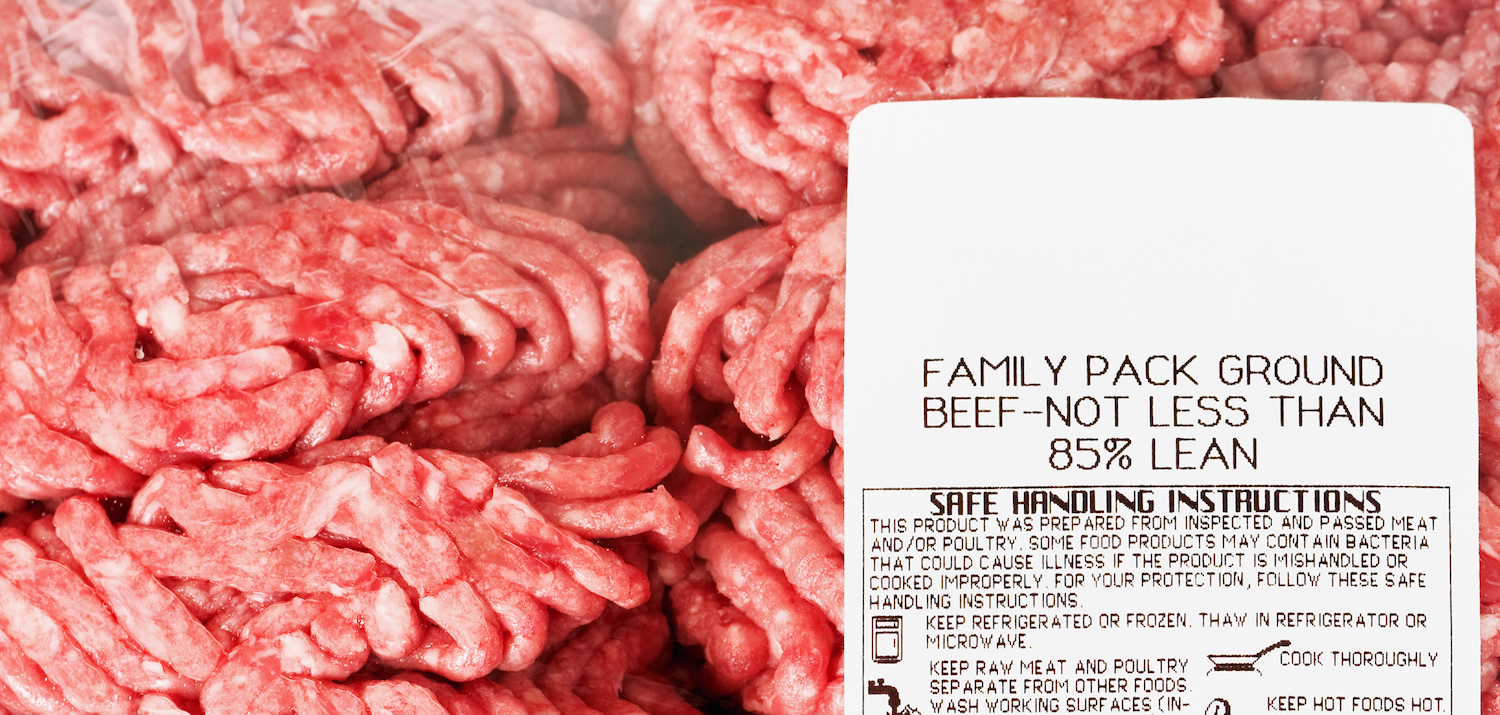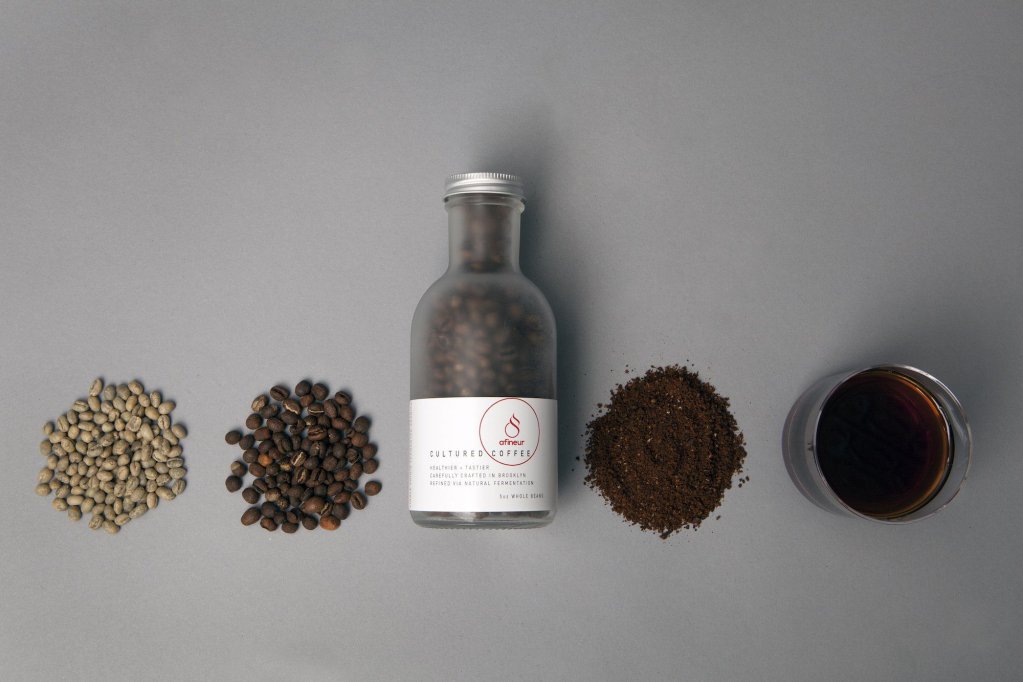
iStock / skhoward
Beef Products Inc. (BPI), the South Dakota-based meat processing company at the center of 2012’s “pink slime” controversy, just won a long-sought semantic victory. For years, the company has argued that its signature product is safe, wholesome, and not unlike everyday burger meat. Now, BPI has enlisted a powerful ally in its effort to recoup its image and reclassify its product: the federal government.
After a months-long evaluation, the United States Department of Agriculture’s Food Safety and Inspection Service (FSIS) determined in December that BPI’s signature product—the offering famously called “pink slime” in an ABC News exposé that got the network in a lot of trouble—can be labeled “ground beef.” Legally speaking, it’s now no different from ordinary hamburger, and could even be sold directly to the public.
“After reviewing BPI’s submission of a new product and new production process, FSIS determined that the product meets the regulatory definition of ground beef under the law in 9 CFR 319.15(a) and may be labeled accordingly,” a FSIS spokesperson told me, in an emailed statement.
FSIS calls it a “new” product because BPI’s process has evolved substantially since 2012—though how exactly it has changed is not immediately clear, for reasons I’ll explain.
In case you missed the 2012 ABC News segment that first introduced the term “pink slime” to the public, or don’t remember details from the wave of coverage that followed, here’s some background.
As cattle carcasses are turned into steaks at a processing plant, knife-wielding workers cut fatty edges off the meat. These carcass cuttings, or “trim”—about 1/3 of each animal’s weight —contain small portions of edible meat, which can be used to make ground beef. The challenge is that hamburger makers always have a target fat content in mind. According to USDA, ground beef can’t contain more than 30 percent fat, while “lean” ground beef, for instance, must contain less than 22.5 percent fat. How to make sure that the standard trim coming off cattle—typically 50 percent meat, 50 percent fat—ultimately results in a product that hits the precise fat content required?
That’s where BPI comes in.
BPI has a symbiotic relationship with a Tyson Foods plant in Dakota City, Nebraska, where its facility was built right next to the slaughterhouse. (In the wake of the ABC News report, the company’s orders plunged from 5 million pounds a week to 1.5 million, ultimately forcing BPI to closes the three other plants it maintained across the country.) Tyson’s beef trim is ferried over from the kill floor to BPI’s plant by conveyor, where it’s warmed to about 100 degrees and sent through a centrifuge that separates the fat from the meat. The liquified fat can then be sold as tallow, while the resulting meat—which the industry has called “lean finely textured beef,” or “boneless beef trimmings” in the past—is nearly fatless. BPI says its product is 95 percent lean, so only five percent fat.
That product is then sterilized with a strong puff of ammonia gas to kill pathogens, as beef trimmings are especially susceptible to contamination. (Ammonia might sound scary, but it’s a common food additive and processing agent that’s generally regarded to be safe in small amounts.) From there, it’s sold to meatpackers who mix it in with their ground beef to lower the fat content as desired. For decades, it was a booming business, and BPI had claimed that its product was present in over 70 percent of ground beef sold in the U.S. before 2012.
 Hillary Bonhomme
Hillary Bonhomme The art of the trade: How the burger patty gets made
Since 1994, the government’s stance has been clear. Lean finely textured beef (LFTB) has been a “qualified component” of hamburger, meaning it can be included in ground beef without being independently disclosed. But it could not itself be called ground beef, suggesting that, in the eyes of regulators it was something else—a padding or additive, but not the real deal.
Some at USDA weren’t comfortable even with that classification. Though ABC made the term “pink slime” famous, the network didn’t actually coin it. The term originated with a USDA microbiologist, David Zirnstein, who used it in a 2002 email to agency staff. According to a 2009 report from The New York Times’s Michael Moss—part of a series of articles on food safety in the ground beef industry that would ultimately earn him a Pulitzer Prize—Zirnstein was troubled by the production method. “I do not consider the stuff to be ground beef, and I consider allowing it in ground beef to be a form of fraudulent labeling,” he wrote in the email, according to Moss’s report.
Several years later, ABC released the now-infamous segment that lead to the “pink slime” hysteria of 2012. BPI argued that the network’s characterization was false and defamatory, ultimately suing it for 1.9 billion dollars. That lawsuit was settled out of court in 2017 for an undisclosed sum, though The Chicago Tribune and other outlets have reported a settlement of at least $177 million paid out by ABC so far. ABC, according to the terms of its settlement, admits no wrongdoing and has stood by its report. And though BPI has managed to recoup some of the economic damage from the fallout, most Americans still think of “lean finely textured beef” as “pink slime.”
That may be about to change. Since the 2012 incident, BPI has launched a campaign called “Dude, it’s beef,” trying to spread awareness about its processes while insisting on language it feels is fair. “Ground beef has always been made with beef trimmed from the whole muscle cuts,” the company points out on its website. “The difference is the precision with which we are able to trim the meat.”
That effort culminated in 2018, when BPI, citing advancements to its process, formally asked FSIS to consider whether its product might just be called “ground beef.”
“It was an extensive review that took well over six months and included consumer reviews, nutritional panels, tours of the plant where agency folks could get a first-hand look at the process and understand what we are doing at BPI,” Nick Ross, BPI’s vice president of engineering, told Beef Magazine, a trade publication that covers the cattle industry.
I wanted to learn more about how the process has changed since the ABC report, to see whether it was technological changes that finally won the government over, or whether FSIS simply came around to BPI’s semantic argument. When I reached out to BPI, the company provided a written statement through a spokesman.
This left me with more questions than answers. How exactly has the process improved? And does the decision to pursue more “consumer-oriented” products mean that BPI has plans to sell its lean beef product directly to the public? It would be a major victory for a company that has long resisted terms like “additive” and “filler”—let alone the pejorative “pink slime”—to be able to sell its product to consumers, undifferentiated on the shelf from traditional ground beef.
Though a BPI spokesperson initially assured me that I’d be able to interview Craig Letch, the company’s director of food safety, Letch ultimately recanted and declined to speak to me for this story. When I sent subsequent questions by email about process changes, the BPI spokesperson responded with an additional statement:
“The evolution of our process since the introduction of lean finely textured beef in the early 1990s has been both continuous and extensive,” the statement read. “Starting with changes in raw material sourcing to only boneless beef trim and continuing through virtually every stage, as our capabilities continued to evolve and improve, it became obvious to us that we should pursue more consumer oriented means of delivering our lean beef to market—sometimes even directly to the consumer. Keeping with the values that have led us to be an industry leader in innovation, it was and is our intent to create new markets and products based upon our lean ground beef.”
Legally, BPI can now sell its product under the label “ground beef.” But will the rest of the world agree that’s the right term?
Meatpackers and their allies seem to have no qualms.
“We see USDA’s decision to update the nomenclature as a positive step forward in recognizing the evolution of the production process that produces a safe, wholesome, sustainable product,” said Eric Mittenthal, vice president of public affairs at the North American Meat Institute (NAMI), a trade organization that represents meatpackers and processors, by email.
But signs suggest not everyone in the industry agrees. In an article on the development published by the online trade magazine Meatingplace, commenters expressed concerns that calling BPI’s product “ground beef” could ultimately lead to a consumer backlash.
“While I personally have no issues with LFTB (or whatever you want to call it) It is a bad move by the industry to hide the fact that this will be in ground beef,” one commenter wrote. “It blew up on us once before, It will blow up again.”
In a comment titled “A Regulatory ‘Victory’ Beef Farmers Will Later Regret?,” another individual said that the industry’s satisfaction over the decision could be short-lived, suggesting that calling a product derived by highly mechanized means “ground beef” is a slippery slope that could pave the way for cell-cultured meat companies to use the term for their own products.
Thanks to FSIS’s decision, there’s nothing stopping BPI from selling its product directly to the public
“It’s not a standalone beef product—it has to be added to ground beef,” says Bill Bullard, president of R-Calf, a group that advocates for independent cattle ranchers. “So I think that consumers deserve to know exactly what they’re buying. If they are as comfortable with it as the industry says they are, then no problem. If there are some consumers that would like to avoid it for whatever reason they may have, we believe that’s the consumer’s right. So our position has always been that the consumer deserves to know what our industry is selling to him or her, and we should be very transparent on precisely what is included in the product.”
It’s not like you can just go out and buy BPI’s product. For now, it’s still used only as a component ingredient. But thanks to FSIS’s decision, there’s nothing stopping the company from selling it directly to the public. The question is whether it will.








